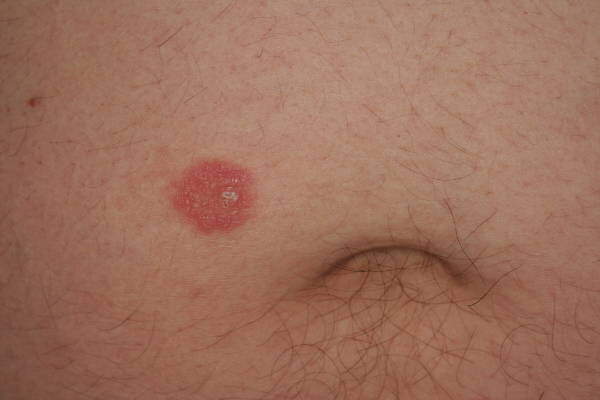Definition of Tinea Cruris
The term tinea cruris is used to refer to dermatophyte infections of the groin and pubic region.
Geographical distribution of Tinea Cruris
The condition is worldwide in distribution.
Causal organisms
The dermatophytes most often encountered in tinea cruris are E. floccosum and T. rubrum. Maceration and occlusion of the skin in the groin give rise to warm moist conditions that favour the development of the infection.
Tinea cruris is a common form of dermatophytosis. It is more prevalent in men than women. It usually occurs between the ages of 18 and 60, but is most prevalent between the ages of 18 and 25, and between 40 and 50. Tinea cruris is often acquired from another infected area of the same individual. Autoinoculation from infected feet via towels is not uncommon.
Tinea of the groin is a highly contagious condition and minor epidemics often occur in schools and other communities. The infection is usually transmitted via contaminated towels or the floors of bathrooms, showers or hotel bedrooms, etc.
Management of Tinea Cruris
Most patients with tinea cruris will respond to local anti-fungal treatment within 2-4 weeks. Topical imidazoles, such as clotrimazole, econazole, miconazole or sulconazole, and allylamines, such as naftifine or terbinafine, should be applied morning and evening for at least 2 weeks. To prevent relapse, treatment should be continued for at least 1 week after the lesions have cleared.

If a patient has extensive lesions, or fails to respond to topical treatment, or has tinea pedis as well, oral treatment should be given. Itraconazole (100 mg/day for 2 weeks) and terbinafine (250 mg/day for 2-4 weeks) have proved more effective than griseofulvin (10 mg/kg per day for 2-6 weeks).
To prevent reinfection following treatment, the patient should be advised to dry the groin thoroughly after bathing and to use separate towels to dry the groin and the rest of their body. The feet should be examined and treated if tinea pedis is present. Occlusive or synthetic garments should be avoided. If the patient is obese, weight loss may be of benefit by reducing chafing and sweating.
Tinea cruris recurs in about 20-25% of patients. If this happens, patients should be given further antifungal treatment and advice about non-pharmacological control measures should be repeated.




